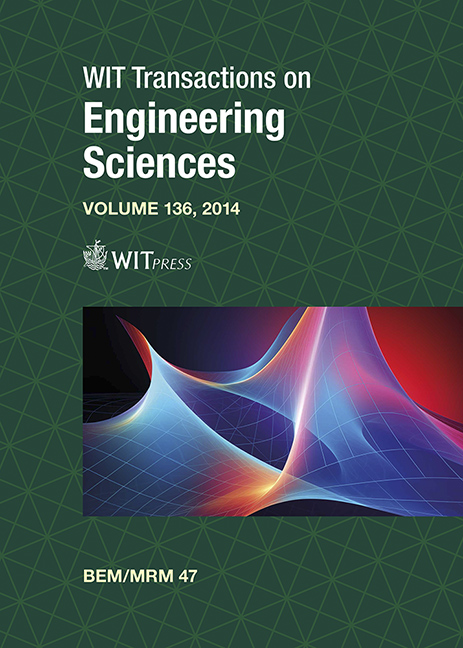SOLID–SOLID INTERFACIAL DYNAMICS AND MODELLING
Price
Free (open access)
Transaction
Volume
136
Pages
19
Page Range
87 - 105
Published
2024
Paper DOI
10.2495/BE470081
Copyright
Author(s)
WEI CHEN, LITENG YANG, LIMEI CAO, XINGHUI SI
Abstract
Solid interface modelling is critical to the stability, stiffness, deformation and thermal performance of a structural system. Different from interior elements, a boundary element may experience changes in material properties, loads and dynamic modes. To date, the computational results from boundary elements are less satisfactory, and the strategy to overcome that drawback is to increase the mesh density near the boundary elements or significantly reduce the time steps when dynamic loads are applied. Recently, new insight into physics has revealed that a solid‒solid interface may experience nondissipative dynamics and produce nodes, antinodes and saddles dynamically. Instead of increasing the mesh density and time step, we propose explicitly including the physics of nondissipative dynamics in the finite element models to reduce the overall demands and cost of computing. In this work, we present the differential equations of nondissipative dynamics and mathematical formulas for computing nodes, antinodes and saddles, which are readily coded in any finite element software. We will show the details of the derivations of those formulas and how they can be included in the finite element models. We will also show some canonical calculations for saving computational time and model sizes and compare the results with measurements and the sensitivity to the mesh density and time steps. We expect that the revelation of new physics and mathematical formulas will increase the accuracy and efficiency of simulations for industrial applications.
Keywords
interfacial phenomena, nondissipative dynamics, solid mechanics, speed of the first sound, speed of the second sound, pulses at interface, pulse train at interface, chaos





